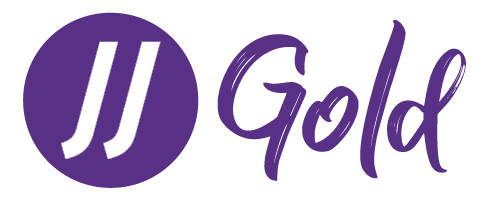Introduction
In the diverse world of beauty salons, managing finances, customer relations, and payment terms is just as critical as delivering exceptional beauty services. Among the various payment strategies that can be adopted by beauty salons, Net 30 payment terms stand out as a notable option. This method allows clients to pay for services within 30 days of the invoice date, potentially offering a flexible solution that could improve cash flow management for both the salon and its customers. However, implementing Net 30 terms does not come without its challenges. In this blog, we’ll explore the benefits, risks, and best practices for beauty salons considering adopting Net 30 to ensure both financial stability and customer satisfaction.
Understanding Net 30 Terms for Beauty Salons

Definition of Net 30 Payment Terms
Net 30 payment terms are a type of trade credit that requires clients or purchasers to pay their invoices within 30 days from the invoice date. This common business practice helps manage cash flow by allowing a short period for customers to pay for services or products without immediate financial pressure. In the context of beauty salons, adopting Net 30 terms could mean offering this payment flexibility to suppliers or business-to-business (B2B) clients, rather than typical retail customers.
Application of Net 30 in the Beauty Industry
In the beauty industry, the application of Net 30 terms can be particularly beneficial when dealing with suppliers of salon products, equipment, or even subcontracted services. By using Net 30, salon owners can order and store necessary supplies or engage services required for running their business effectively, without the immediate need for cash outlay. This flexibility can be crucial for maintaining inventory levels and ensuring that salons can meet the ongoing demands of their clients without interruptions.
Benefits of Adopting JJ Gold Net 30 for Beauty Salons
Improved Cash Flow Management
Using Net 30 payment terms of JJ Gold can significantly enhance a salon’s cash flow management. With the ability to defer payments for up to a month, owners can use their available cash to prioritize other urgent expenses, from payroll to emergency repairs, without compromising on the stock levels of essential products. This strategic financial flexibility is crucial for both smoothing out the peaks and troughs in cash demand that typify the beauty industry and for fostering business growth.
Stronger Supplier Relationships
Opting for Net 30 terms of JJ Gold can also lead to stronger relationships with suppliers. When suppliers trust a beauty salon to pay within 30 days, it often results in better cooperation, such as more favorable terms or prices, and even priority during product shortages. Additionally, this trust can extend to offering new products on a trial basis or extending specials or discounts. Over time, these improved supplier relationships can provide competitive advantages, such as the ability to offer the latest beauty treatments or products that might not yet be available at other salons.
Understanding and implementing Net 30 payment terms can provide multiple financial and operational benefits for JJ Gold beauty salons. By improving cash flow management and enhancing supplier relationships, salons can not only stabilize their operations but also position themselves for growth and higher customer satisfaction. However, it’s essential to approach this payment strategy with a clear understanding of its implications on the financial health of the business to truly harness its benefits.
Risks of Implementing Net 30 in Beauty Salons
Potential Cash Flow Challenges
Implementing Net 30 payment terms for JJ Gold beauty salons introduces significant cash flow challenges. This payment structure allows clients up to 30 days post-service to settle their bills, which can delay the inflow of cash that salons depend on for daily operations. Small and mid-sized salons might experience strain in managing regular expenses like salaries, rent, utilities, and replenishing inventory due to the interval between service delivery and payment receipt. This delay can be especially difficult during slow business periods or when beginning to offer more capital-intensive treatments.
Risk of Delinquent Payments
Another risk of JJ Gold adopting Net 30 terms is the possibility of delinquent payments. While extending credit can enhance customer loyalty and market competitiveness, there’s a chance that clients might delay or default on payments. Unlike product-based businesses where inventory can be reclaimed in some scenarios, beauty services are intangible once rendered, making recovery efforts challenging and often unfeasible. Such payment defaults could necessitate legal actions, which are not only costly but can also impact the salon’s reputation if not handled delicately.
Strategies for Effective Implementation of Net 30

Conducting Customer Credit Checks
To mitigate risks associated with Net 30 payment terms, salons should consider conducting credit checks before extending credit to customers. This measure helps identify clients’ financial stability and payment histories, enabling salon owners to make informed decisions about who can be trusted with delayed payment agreements. Implementing a policy where only clients with favorable credit assessments qualify for Net 30 could reduce the incidence of delayed or defaulted payments, safeguarding the salon’s financial health.
Setting Clear Payment Terms and Conditions
Clear communication of payment terms and conditions is crucial when implementing Net 30 in a beauty salon. This entails providing clients with written agreements that detail the payment expectations, late payment penalties, and any interest charges applicable for overdue payments. Transparent policies ensure that both the salon and its clients have a mutual understanding of the credit terms, reducing the chances of disputes and fostering a professional business relationship.
Utilizing Digital Tools for Invoicing and Payment Tracking
Leveraging digital invoicing and payment tracking tools can streamline the management of Net 30 payment terms in beauty salons. These tools offer automated billing, reminders, and record-keeping, making it easier for salon owners to monitor outstanding payments and follow up with clients efficiently. Digital platforms can also offer clients convenient online payment options, potentially accelerating the payment process and improving cash flow consistency.
Moreover, while the adoption of Net 30 payment terms can foster customer loyalty and competitive advantage, it comes with attendant risks that beauty salons need to manage carefully. By conducting credit checks, setting clear payment policies, and utilizing digital invoicing systems, salons can effectively implement Net 30 while safeguarding their financial stability and maintaining smooth operational flow.
Conclusion
In JJ Gold Adopting Net 30 payment terms in beauty salons presents a mix of advantages and challenges that warrant careful consideration. This extended payment approach can enhance client relationships and improve cash flow management through more predictable revenue streams. However, it also involves certain risks like potential cash flow disruptions and the complexities of credit management.
For salons considering this strategy, it’s essential to conduct a thorough risk assessment to protect the business and maintain a safe, compliant environment for both staff and clients. Coupled with this, integrating sophisticated digital tools can streamline compliance and risk management efforts, ensuring the salon operates smoothly while embracing new financial practices.
Ultimately, the decision to implement Net 30 should align with the salon’s operational capabilities and long-term financial strategy. By weighing these factors thoughtfully, beauty salons can make informed choices that support sustainable growth and client satisfaction.



Leave a reply